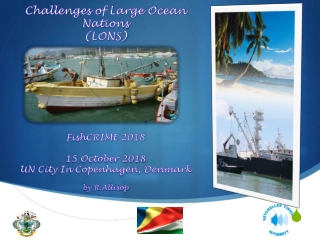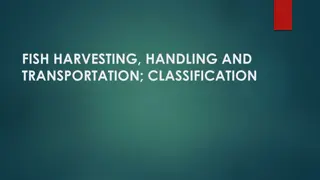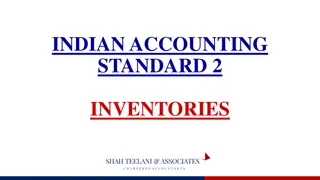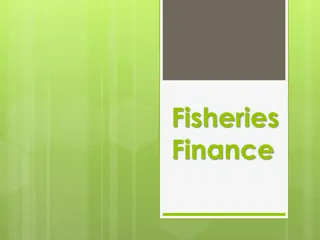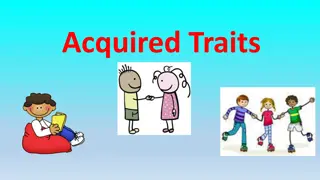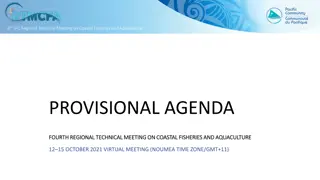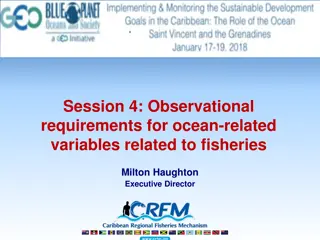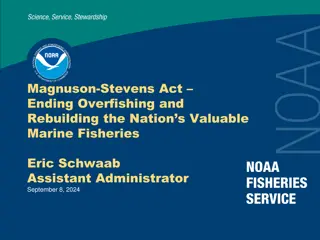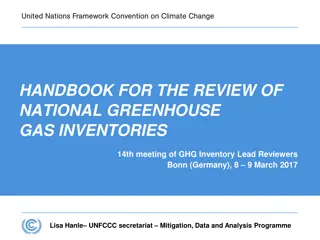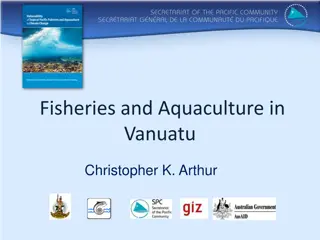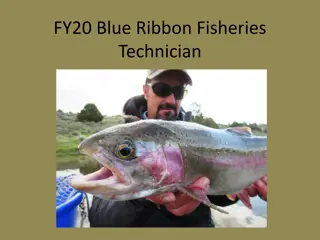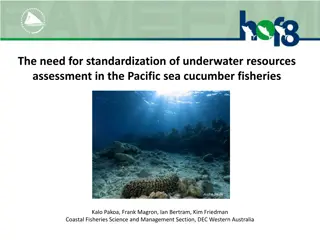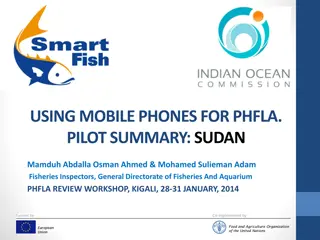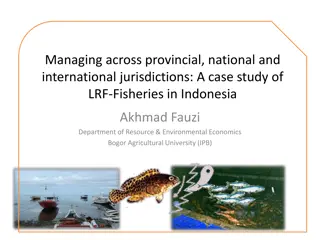Workshop on Fisheries Inventories: Issues, Challenges, and Lessons Learned
This content discusses the workshop on fisheries inventories in Liberia, focusing on data collection, gaps, deficiencies, and capacity building. It covers the profile of fisheries and marine resources, fishery data forms, exploited marine resources, challenges faced, and more. The workshop aims to enhance reporting on fishery inventories by FCWC countries.
Uploaded on Feb 20, 2025 | 0 Views
Download Presentation

Please find below an Image/Link to download the presentation.
The content on the website is provided AS IS for your information and personal use only. It may not be sold, licensed, or shared on other websites without obtaining consent from the author.If you encounter any issues during the download, it is possible that the publisher has removed the file from their server.
You are allowed to download the files provided on this website for personal or commercial use, subject to the condition that they are used lawfully. All files are the property of their respective owners.
The content on the website is provided AS IS for your information and personal use only. It may not be sold, licensed, or shared on other websites without obtaining consent from the author.
E N D
Presentation Transcript
FCWC-FIRMS workshop on fisheries inventories <NAME of COUNTRY> Issues, challenges and lessons learned focusing to data collection, data gaps and deficiencies, and capacity <Name of the Author> Rel. to agenda item 5: The FCWC fisheries-Countries reporting on fishery inventories FCWC-FIRMS workshop on fisheries inventories. Liberia, 23-24 November 2017
Outline Profile of fisheries and marine resources for the country Brief overview for the focus fisheries Fishery Data Form Fishery Identity Exploited Marine Resources Indicators Exploitation and Socio-economics Sources and quality of Information Issues, challenges and gaps
FIRMS Fishery inventory FISHERY: A Fishery is an activity leading to the harvesting of fish, within the boundaries of a defined area. The fishery concept fundamentally gathers indication of human fishing activity, including from economic, management, biological/environmental and technological viewpoints (FIRMS 2006, modified from FAO glossary of fisheries) . A statistical fishing unit is a particular type of fishing activity, conducted by a single flag country using a vessel and its major fishing gear. Key data for fishery unit identification: Species (target and bycatch) Fishing area Gear Flag state Management entities
Profile of fisheries and marine resources for the country EEZ extension <km2> Geographical overview National boundaries <list of countries> Main international agreements <list of agreements> Maritime Domain Joint management plans <list of management plans> Catches <tons> General figures on production sector Employments <number of direct jobs> National fleet <total number of vessels> Fishery vessels Foreign fleet <total number of vessels> Stocks assessed <species (year)> Trends and issues <Free text> <Please insert missing information>
Brief overview for the focus fisheries Country overall production (marine capture): <Value in tons> Fishery Catches/Landings (tons) Percentage from overall country production <Extend table as needed> <Use one row for each fishery>
Fishery data form Fishery: <enter fishery name> (1) Fishery Identity (e.g. Country EEZ) Fishery area name Characteristics of the fishing ground <check controlled terms> Depth zone <check controlled terms> Horizontal/vertical distribution <check controlled terms> Bottom type <check list of gears> Fishing gear (e.g. Ministry of Fisheries) Management entity Free text Management measures Free text Trend of the fishery <Please refer to the FIRMS Excel inventory for full list of codes and terms> <Use one slide for each type of fishery >
Fishery data form Fishery: <enter fishery name> (1) Exploited Marine Resources Target species Common name Scientific name Stock assessed by CECAF (Y/N) Bycatch Common name Scientific name Stock assessed by CECAF (Y/N) <Use one slide for each type of fishery; add rows for species as necessary> <See list of CECAF stocks to verify if a species in available or not in the FAO-FIRMS Fact Sheets>
Fishery data form Fishery: <enter fishery name> (1) Potential indicators in support of the Fisheries Management Plans (FMPs): Exploitation Fishery Indicator Unit <Depending by the measure (USD, Day, Ton, Persons, Vessel, etc.)> Time Frame <A single year value or a range (e.g. last 5 years)> Value <The actual value> Catch Ton Landed volume (catch minus discards) Ton CPUE Kg/day Fishing Effort Annual days <Please provide available data>
Fishery data form Fishery: <enter fishery name> (1) Potential indicators in support of the Fisheries Management Plans (FMPs): Exploitation cont. Fishery Indicators participation in the fishery Unit <Depending by the measure (USD, Day, Ton, Persons, Vessel, etc.)> Time Frame <A single year value or a range (e.g. last 5 years)> Value <The actual value> Number Vessels (V) or Fishing Unit (FU) Number (V)/(FU) Fleet Tonnage GRT Fleet Power KW Number of ports/landing sites Number Number Fishermen Persons <Please provide available data>
Fishery data form Fishery: <enter fishery name> (1) Potential indicators in support of the Fisheries Management Plans (FMPs): Socioeconomic Fishery Indicator Unit <Depending by the measure (USD or local currency or CFA (West African franc), Day, Ton, Persons, Vessel, etc.)> Time Frame <A single year value or a range (e.g. last 5 years)> Value <The actual value> Landed Value Landed Average Price (calculated from total value divided by total catch) Gross Value Added <Please provide available data>
Sources and quality of Information - Summary - Fishery Data Source (e.g. national database, openArtfish, ) Quality (e.g. Reference year, relative error, ) <Please discuss the sources and their quality utilized to fill this presentation>
Issues, Challenges and Gaps - Summary - Gaps (Y/N) Description Fishery statistics (landings, efforts, fleet size) Socioeconomic data Biological data (Length, age, life history) Technical capacity (knowledge/training) Legal/policy/Institutional (e.g. no reporting required by law) Coordination and management of data collection Data sharing <Please fill the slide according to your work experience and issues faced when compiling this presentation>


